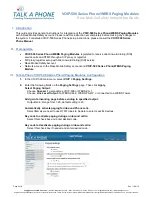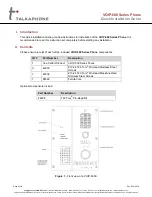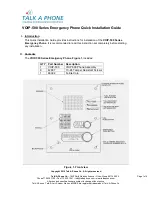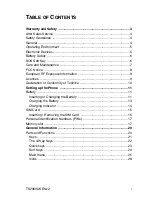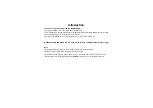
1-14
Cisco Unified IP Phone 6921, 6941, 6945, and 6961 Administration Guide for Cisco Unified Communications Manager 8.6 (SCCP and SIP)
OL-24567-01
Chapter
Understanding Security Features for Cisco Unified IP Phones
Configuring Network Parameters Using the Cisco Unified IP Phone
You can configure parameters such as DHCP, TFTP, and IP settings on the phone itself. You can also
obtain statistics about a current call or firmware versions on the phone.
For more information about configuring features and viewing statistics from the phone, see
Chapter 4,
“Configuring Settings on the Cisco Unified IP Phone”
and see
Chapter 7, “Viewing Model Information,
Status, and Statistics on the Cisco Unified IP Phone.”
Providing Users with Feature Information
If you are a system administrator, you are likely the primary source of information for Cisco Unified IP
Phone users in your network or company. To ensure that you distribute the most current feature and
procedural information, familiarize yourself with Cisco Unified IP Phone documentation on the
Cisco Unified IP Phone web site:
http://www.cisco.com/en/US/products/ps10326/tsd_products_support_series_home.html
From this site, you can view various user documentation.
In addition to providing documentation, it is important to inform users of available Cisco Unified IP
Phone features—including those specific to your company or network—and of how to access and
customize those features, if appropriate.
For a summary of some of the key information that phone users need their system administrators to
provide, see
Appendix A, “Providing Information to Users Via a Website.”
Understanding Security Features for Cisco Unified IP Phones
Implementing security in the Cisco Unified CM system prevents identity theft of the phone and
Cisco Unified CM server, prevents data tampering, and prevents call signaling and media stream
tampering.
To alleviate these threats, the Cisco IP telephony network establishes and maintains secure
communication streams between a phone and the server, digitally signs files before they are transferred
to a phone, and encrypts media streams and call signaling between Cisco Unified IP phones.
The Cisco Unified IP Phone 6921, 6941, 6945, and 6961 use the Phone security profile, which defines
whether the device is nonsecure or encrypted. For information on applying the security profile to the
phone, refer to the
Cisco Unified Communications Manager Security Guide
.
If you configure security-related settings in Cisco Unified CM Administration, the phone configuration
file will contain sensitive information. To ensure the privacy of a configuration file, you must configure
it for encryption. For detailed information, refer to the “Configuring Encrypted Phone Configuration
Files” chapter in
Cisco Unified Communications Manager Security Guide.
Table 1-5
shows where you can find additional information about security in this and other documents.
































